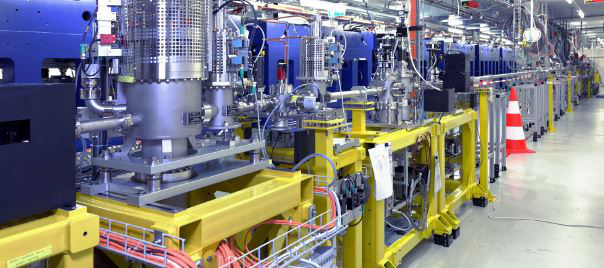Speaker
Description
Measurements of the dynamics of a material on the fs-to-ns temporal scale and atomic length scale provide essential information to guide our understanding of disordered materials. Split-pulse x-ray photon correlation spectroscopy (spXPCS) was recognized early in the development of the Linac Coherent Light Source as a technique that could possibly provide critical measurements of these dynamics. To conduct spXPCS measurements at fs-to-ns scale, two identical x-ray pulses are delivered to the same spot on the sample, along the same direction, with a tunable time separation over the time scale of interest. This time regime is currently beyond the capability of the two-pulse accelerator based machine operation modes at free electron laser (FEL) facilities, and was expected to be reached with the x-ray analog of a visible optical split-delay instrument.
Such x-ray optical systems, usually referred to as x-ray split-delay optics, have seen many iterations since the first x-ray FEL facility became operational. Thin Bragg crystals were initially favored and explored as the beam splitter. However, residual strain and beam-induced thermal-mechanical issues in the thin crystals have prevented their effective use for XPCS experiments so far. Later, wave-front splitting designs adopted edge-polished silicon crystals for dividing the wave-front into two halves, and demonstrated stable and routine delivery of two microfocused x-ray spots to the sample with promising stability for pump probe experiments. However, a non-negligible crossing angle between the two beams, as a result of the wave-front splitting mechanism, poses a serious challenge for realizing visibility spectroscopy measurements. Wave-front splitting also makes the output beam properties sensitive to beam pointing jitters, and this degrades the effective spatial overlap.
Sun et al. proposed an all channel-cut split-delay design that demonstrated superb pointing stability which is a critical requirement for two-pulse x-ray experiments. This design, however, suffered from the pulse front tilt and photon energy dispersion due to the use of asymmetric reflections.
Here we present a modified version of the all channel-cut split-delay system design. It realizes amplitude-splitting and the earlier technical difficulties are expected to be overcome. In this new design, a pair of $\pi$-phase-shift transmission gratings are introduced as the amplitude splitter and recombiner. An additional pair of asymmetric channel-cuts are introduced in the delayed branch to eliminate the dispersion and pulse front tilt. A performance analysis of wave propagation through a prototype model using dynamical diffraction theory revealed that sub-nanoradian relative pointing stability during a delay scan can be achieved.
We believe that this new design, once realized, will represent a significant step towards realizing split-pulse x-ray photon correlation spectroscopy at FEL facilities investigating ultrafast equilibrium dynamics of disordered matter.

